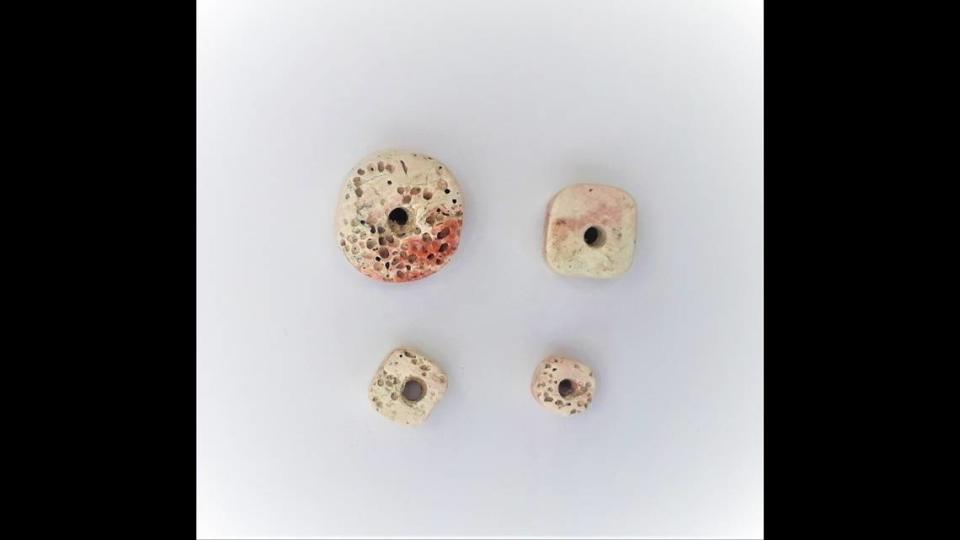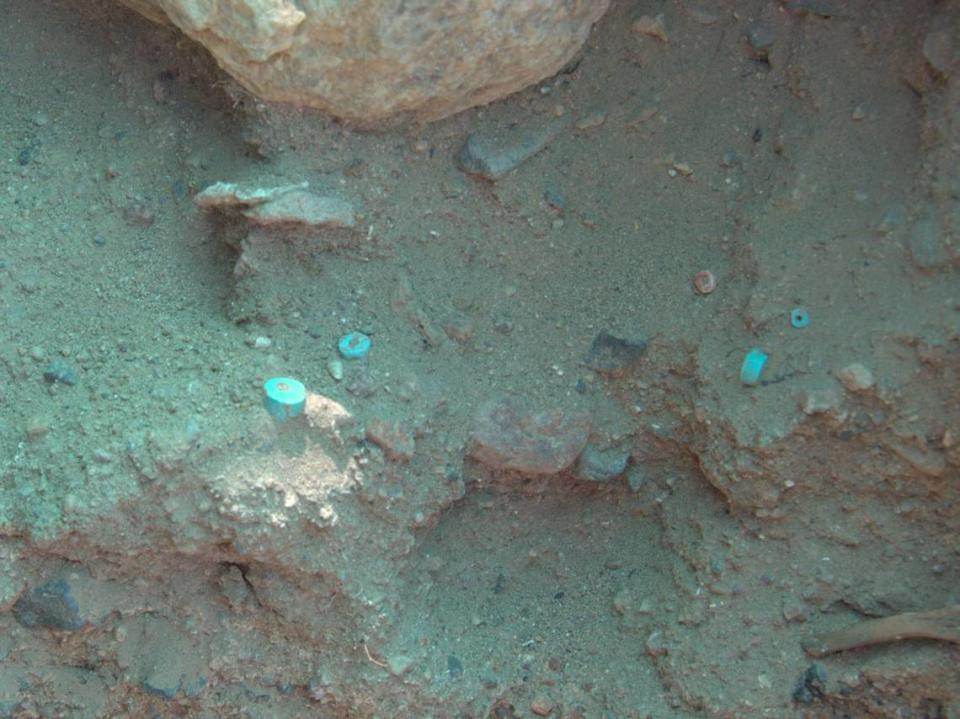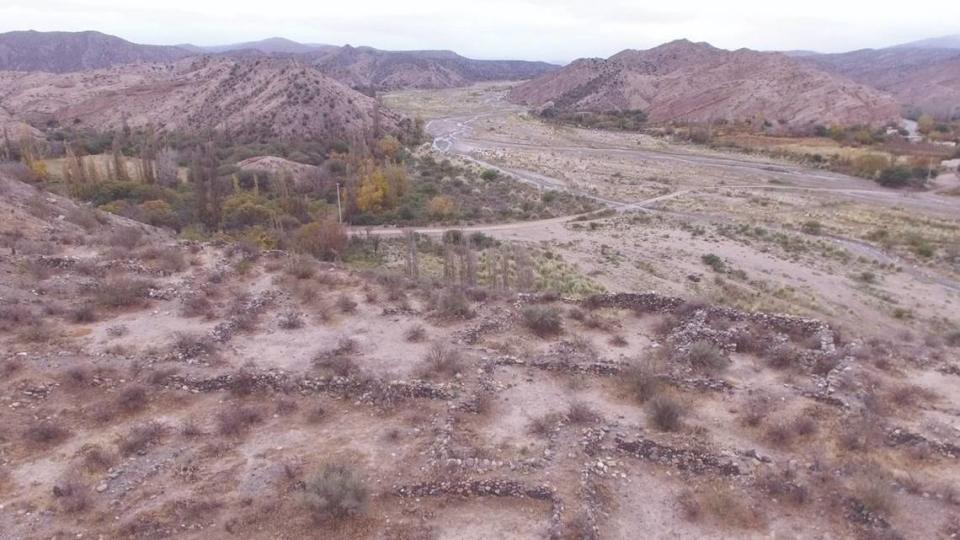Ancient beads — used in human sacrifice — discovered in Andes mountains. See the find
Deep in the Andes mountains, the weathered walls of an ancient town poke out from the dried dirt.
The ruins were discovered in the northern Argentinian Hualfin Valley by archaeologists in the 1920s, but excavation has spanned more than a century as researchers dig into history, layer by layer.
In recent years, researchers reached a zone of the site called “Room 8” and discovered something out of place — beadwork made from the shells of mollusks.
The site is about 1,800 miles from the ocean, researchers said in a study published March 11 in the Journal of Archaeological Science: Reports.
Red and white, the beads were carefully carved, rounded and punched with a hole, study authors said.

Uncover more archaeological finds
What are we learning about the past? Here are three of our most eye-catching archaeology stories from the past week.
→ Boys found rare silver treasure under church, kept it in box for 60 years
→ 'Rare' 400-year-old tomb — with well-preserved interior — found in China
→ Stone sarcophagi went unopened for 600 years — until now
The beads date to the 15th century, the researchers said, a time classified as “pre-Inka” but with “Inka influence.”
“For the Inkas, as for all central Andean societies, the mullu (as the (mollusk) is called in the Andes) had a high symbolic value, related to water and, therefore, to agricultural rituals, and was used as an offering in tombs, temples, hills and lagoons and as a prestige good for use by elites linked to the state,” the study said. “There is a consensus among Andean archaeologists that the Inka state organization centralized the circulation of the mullu in the Tumbes region, where it arrived from Ecuador on rafts, then crafted in the local workshops of artisan specialists and distributed to all points of the Tawantinsuyu.”
The beads of “Room 8” were found in what the researchers believe to be one of these workshops.
It was described as a “shed” that opened up to a large “patio” space and was filled with pieces of pottery, minerals, stones like turquoise and aragonite and 18 shell beads, according to the study.
The researchers said it would have been a place where “manufacturing practices of metal, aragonite, sulfur and bone objects were carried out, in addition to the use of other objects – perhaps already manufactured – made of exotic materials such as mullu itself and turquoise.”

But unlike metalwork, the shells of the mollusks had a special — and sacrificial — purpose.
Mollusk beads, found previously in the southernmost region of the Inka empire, were exclusively discovered on towering, sacred peaks of the Andes, and as part of burials, the researchers said.
The burials were for sacrificed children and young women, the researchers said, in a ritual known as capacochas.
The young women and children would be killed ritualistically, the researchers said, and then buried “near the peak of some of the highest mountains in the Andes.”

Their bodies were dressed in the finest clothes, wore feather headdresses and were surrounded by Inka gold, silver and mollusk statuettes, according to the study.
The rituals were completed in places of high political power, the researchers said, so their presence in a workshop in northwestern Argentina suggest they were created during the time the Hualfin Valley was being annexed into the Inka state.
The spread of this political power followed the exchange of elite goods, such as gold, silver and mollusk, according to the study.
“It is proposed that the site could have been a space of local power, where an elite group, that organized the manufacture of prestigious goods, was benefited by the mechanisms of hierarchization and legitimation of political power promoted by the state,” the researchers said.
The site was found in the Catamarca province of modern-day Argentina, about 700 miles northwest of Buenos Aires.
Ruins of wine brewing workshop — at least 380 years old — unearthed in China. See them
Metal detectorist thinks he found coin. It was actually an ancient treasure. See it
Metal detectorist stumbles on ‘lovely’ ancient Roman treasures in Wales, photo shows
Experts buy insect from collector — and accidentally find species not seen in 150 years

